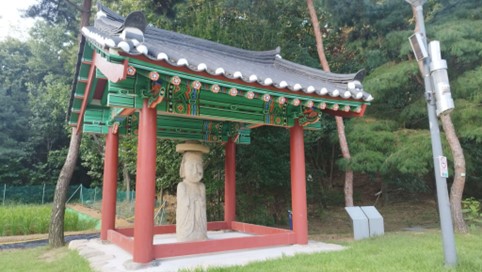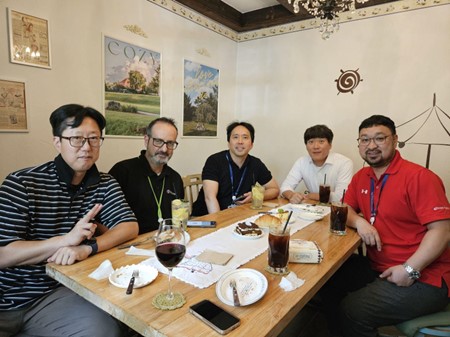
Two weeks ago, I (Asaf Matan), had the incredible opportunity to visit the Samsung Memory Research Center (SMRC) to deepen our collaboration. SMRC, located in the Device Solutions Research (DSR) building, is dedicated to integrating the latest Samsung memory and storage technologies and testing them with various software-defined storage solutions, including Lightbits.
The visit resulted in some exciting breakthroughs, strengthening the partnership between Lightbits and Samsung, and advancing our shared goals in data storage and high-performance computing.

Dongtan Yeoul Park
PostgreSQL Performance Breakthrough at Dongtan Yeoul Park
The Lightbits storage solution was installed on two clusters—one Intel-based and one AMD EPYC-based, each consisting of three nodes. We connected three AMD EPYC clients to both clusters over NVMe/TCP and ran performance and functional tests, including several VMs connected to the Lightbits solution.
A standout achievement was our success in significantly boosting PostgreSQL performance on the Lightbits three-node cluster equipped with Samsung QLC NVMe SSDs. By optimizing the setup, we achieved an impressive throughput of 30K Transactions Per Second (TPS) for heavy write workloads, while keeping the Lightbits system load below 10%. This result met the expectations, showcasing the exceptional efficiency of our technology.
We estimate that this setup could support over 15 PostgreSQL instances in a containerized environment, opening new scalability opportunities for Samsung QLC SSDs. This milestone highlights the scalability and performance advantages that Lightbits brings to demanding enterprise workloads. With the Lightbits solution, scaling is seamless—add more drives to a node for increased capacity or add more nodes to the cluster for linear performance improvements—all while maintaining consistent low latency.

Lunch with Samsung SMRC team
Training and Future Collaboration on OpenStack and Photon
During the visit, I conducted a training session on Kubernetes and OpenStack, focusing on building a resilient, end-to-end OpenStack environment. Samsung is particularly keen to deploy Photon, Lightbits’ graphical user interface for managing multiple clusters, and I shared how we can simplify this transition.
This sparked a productive discussion about creating an optimized OpenStack or Kubernetes environment with Red Hat Linux, a strategy that would highlight Samsung’s cutting-edge hardware in the best possible way.
Strategic Meetings and Ongoing Optimizations
I also met with Michael Kim, head of SMRC, Johnny Kim, and the broader team to plan the next steps for hardware testing and synthetic workload evaluations. The SMRC team was highly receptive to the idea of creating environments that showcase the performance and efficiency of their new devices in combination with Lightbits’ technology.
A key outcome of our meetings was our discussion around SNIA and OCP events. Samsung is eager to push for new industry standards related to SSD health and drive capacity, and they were particularly impressed by the transparency and insights provided by Lightbits’ exporter software, which delivers detailed SSD metrics.
This positions Samsung to drive future innovations in SSD technology, setting the stage for continued leadership in the industry.

